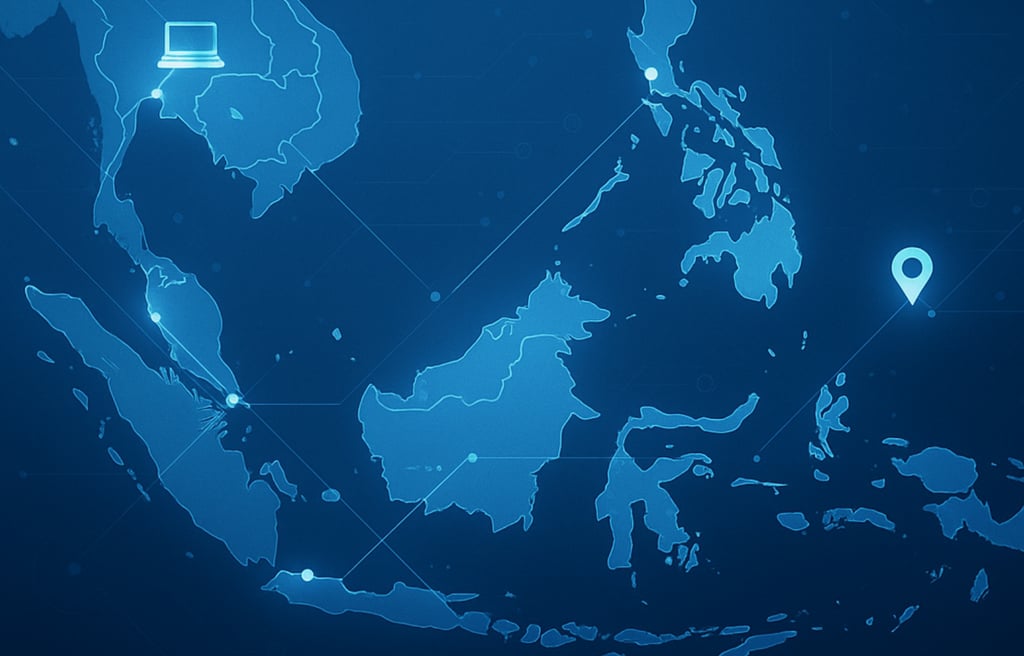The Future of Remote Work in Southeast Asia
As global businesses continue to embrace hybrid and fully remote setups, Southeast Asia is emerging as one of the most dynamic regions for distributed talent. This article explores the shifting landscape of remote work across countries like the Philippines, Indonesia, and Vietnam — highlighting the region’s rising digital infrastructure, strong English proficiency, and competitive labor market. It also examines how startups and established firms alike are leveraging Southeast Asian talent to scale operations cost-effectively and sustainably.
RECRUITMENT & STAFFINGREMOTE TALENTGLOBAL TRENDSTALENT MARKET
YesHire Remote Team
10/21/20252 min read


The Future of Remote Work in Southeast Asia
As the world moves toward a more connected and digital future, Southeast Asia has quietly become one of the most promising regions for remote work. Once known primarily for outsourcing and BPO operations, countries like the Philippines, Indonesia, Vietnam, and Malaysia are now emerging as global hubs for remote talent — not just for customer support, but for creative, technical, and strategic roles as well.
1. The Digital Infrastructure Boom
In the past decade, Southeast Asia has seen massive investments in internet connectivity, data centers, and digital tools. High-speed broadband and mobile penetration have made it easier than ever for professionals to work from home or co-working spaces. Platforms like Zoom, Slack, and Asana are now household names, enabling collaboration across borders with ease.
2. Global Companies Are Taking Notice
Startups and enterprises from the US, UK, and Australia are increasingly looking to Southeast Asia not only for cost efficiency but for the region’s growing pool of skilled, English-speaking professionals. The Philippines, for instance, continues to dominate in communication-based roles, while Indonesia and Vietnam are fast becoming powerhouses for tech and creative industries.
3. A Shift from Outsourcing to Partnership
The narrative is changing. Businesses are no longer just outsourcing tasks — they’re building long-term partnerships with Southeast Asian talent. This shift is driven by the reliability, adaptability, and cultural compatibility of professionals in the region, who are proving they can lead projects, manage teams, and contribute at a strategic level.
4. Government Support and Talent Development
Governments across the region are now supporting the remote economy. Initiatives focused on upskilling, digital literacy, and entrepreneurship are preparing millions for the future of work. In the Philippines, for example, remote job training programs and freelancing workshops are becoming common, helping workers transition from traditional offices to digital platforms.
5. The Rise of Regional Collaboration
Southeast Asia’s growing ecosystem of freelancers, remote agencies, and startups is leading to regional collaboration. Professionals are no longer limited to serving Western clients — they’re now working with neighboring countries, creating a strong, interconnected market that thrives on shared expertise.
6. The Challenges Ahead
Despite its rapid progress, the region still faces hurdles — such as inconsistent internet quality in rural areas, payment gateway limitations, and the need for better digital laws. However, these challenges are being addressed gradually as governments and private sectors invest in modernization.
7. A Promising Horizon
The future of remote work in Southeast Asia is bright. The combination of skill, affordability, and global connectivity positions the region as a top choice for businesses worldwide. For many professionals, remote work isn’t just an alternative — it’s becoming the preferred lifestyle.
Conclusion
Southeast Asia is no longer catching up; it’s leading a new wave of remote innovation. As digital infrastructure and global trust continue to grow, the region will stand at the heart of the world’s remote workforce — proving that talent truly knows no borders.
At YesHire Remote, we’ve seen firsthand how global companies are transforming their teams through Southeast Asian talent — and this is only the beginning.
Related Article:
Why Global Startups Are Turning to Filipino Remote Talent
The Secret Behind the Filipino Work Ethic: Why Clients Keep Coming Back.
7 Reasons Outsourcing to the Philippines Saves You More Than Money
The Future of Remote Work in Southeast Asia
Why 2026 Is the Year of Borderless Hiring
How AI Is Changing the Way Remote Teams Work
Connect
Streamline your hiring with pre-vetted talent.
Get hiring tips and updates — straight to your inbox.
support@yeshireremote.com
© 2025. All rights reserved.
YesHire Remote (Proudly Filipino!)
Rizal St. Old Albay
Legazpi City, Albay
Philippines 4500
We Offer Online Courses for Freelancers:
Learn More about YesHire Academy
